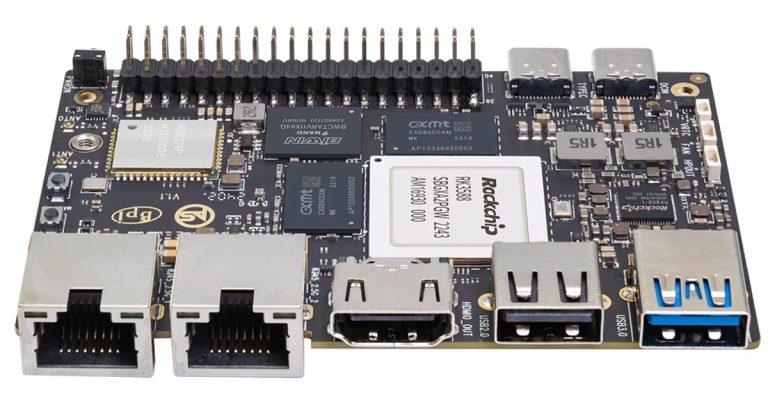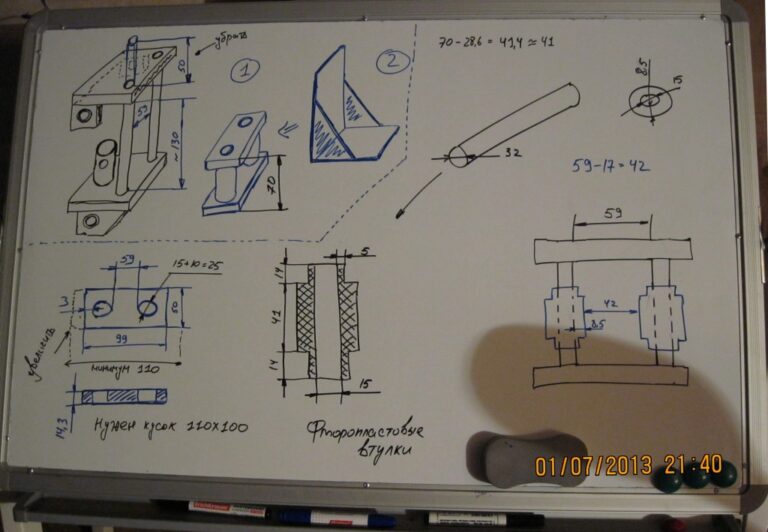5 models for different purposes

Time passes quickly, it is already the end of February 2024. In the relatively short period of time that has passed since the publication of the last collection, manufacturers have managed to release new devices. There are more than five, but we’ll tell you about the ones we liked the most. Details are under the cut.
Milk-V Duo S

It’s a tiny single-plate device that costs only $11. Dimensions – 43*43 mm. But the developers managed to equip the device with Ethernet, USB Type-C and Type-A ports. There is also a card reader and two expansion connectors.
As for the cost, this is the price of the base model. There are also more advanced ones. Here is a complete list of what the manufacturer offers:
- Milk-V Duo S (without WiFi and main memory) for $11.
- Milk-V Duo S with WiFi 6 & BT 5 for $14
- Milk-V Duo S with 8GB eMMC (no WiFi) for $16
- Milk-V Duo S with 8GB eMMC, WiFi 6 & BT 5 & PoE HAT for $20
Each model includes 512MB of DDR3 RAM and an SG200 processor. As for the processor, here are its characteristics:
• 1 x C906 RISC-V core @ 1 GHz
• 1 x C906 RISC-V core @ 700 MHz
• 1 x ARM Cortex-A53 core @ 1 GHz
• 8051 6KB MCU
• 0.5 TOPS NPU

It is worth noting that using RISC-V and ARM cores simultaneously
It is forbidden. Instead, the device offers to choose which cores will be used at startup.
In addition, you cannot use both USB ports at the same time. You will have to work alternately with either one or the other. What else does the device offer:
- 2 x 2-lane MIPI-CSI connectors
- 1 x MIPI-DSI, 4-lane header
- 39 GPIO connectors
The board supports 5V/1A input voltage and has two hardware buttons. By the way, the Duo S has twice the RAM of the Duo 256M and four times more than the original Duo single-board.
Deliveries will begin in March 2024.
Libre Computer Solitude

This is one of the single-board devices using the “raspberry” form factor. It is based on the Amlogic S905XD3 processor with four ARM Cortex-A55 cores and Mali-G31 MP2 graphics. The cost of the model with 4 GB LPDDR4 is $45.
The device, by the way, not only looks similar to the Raspberry Pi Model 3 B+, but it also has a compatible GPIO, so there will be no problems with a number of accessories designed for the Raspberry.
Here is a list of ports and connectors:
• 1 x HDMI 2.0
• 4 x USB 3.0 Type-A
• 1 x USB 2.0 Type-C
• 1 Gigabit Ethernet
• 1 x microSD
• 1 x 3.5mm audio
Support for microSD cards is provided for storing the operating system. There is also an eMMC 5.x connector in a compact design. Image output is carried out via the HDMI 2.1 interface, in addition, DSI and CSI ports are available for connecting specialized cameras and displays.
The single board is compatible with Debian, Fedora, Ubuntu, OpenSUSE, Raspbian, Armbian, LibreELEC, CoreELEC, Lakka and Android.
Banana Pi BPI-M7

It was released by the Chinese company SinoVoIP, which has been developing single-board computers for several years. Typically, this company does not produce the most powerful and productive devices. The BPI-M7 is also not a performance benchmark, but it does support 32 gigabytes of RAM – a rarity for single-board devices.
But besides this feature, the device has something to boast about. Here are its characteristics:
- RK3588 processor: Quad A76 2.4Ghz + Quad A55 1.8Ghz cores, Mali G610MC4 graphics;
- Wi-Fi 6 support;
- Bluetooth 5.2 support;
- PCIe 3.0 x4 NVMe SSD support;
- You can connect up to 3 monitors: HDMI 2.1, supports up to 8K and 60 FPS. USB-C with Display Port support, supports up to 8K and 30 FPS; MIPI DSI, supports up to 4K and 60 FPS;
- Two 2.5G Ethernet ports;
- Two USB 3.0 ports;
- One USB-C and one USB-C with Display Port support;
- Two MIPI CSI ports for cameras;
- 8/16/32 RAM type LPDDR4x;
- GPIO to 40 PIN;
- Linux kernel 5.10;
- Dimensions 92 by 62 mm. (form factor PI-co ITX).
In addition to the solid-state drive, you can also install a microSD memory card. An SSD can be used to install and load the operating system, and an SSD can be used for storing data, since memory cards traditionally lose to SSDs in read/write speed.
As for supported operating systems, the device supports Debian Linux 10 (Linux kernel 5.10) or Android 12.
The cost of the device, of course, is rather high – $165, it is already on sale. It’s interesting that the device became known in mid-2023, but they started selling it only now.
Radxa X2

An interesting single-board device, the size of which is 155 x 80. About the size of a smartphone. But this is a full-fledged computer, with Gigabit Ethernet, USB-C and USB-A, HDMI ports. As for the processor, an Intel Celeron J4125 with Intel UHD graphics is installed. By the way, single-payer is inexpensive – only $39.
Here is a list of ports and connectors:
• 2 x HDMI ports
• 1 x Gigabit Ethernet port
• 2 x USB 3.0 Type-A port
• 2 x USB 2.0 Type-A port
• 1 x USB Type-C port
• 1 x 3.5mm audio
• 1 x 40-pin GPIO
Radxa also features a Raspberry Pi RP2040 microcontroller that controls the GPIO interface, supports an optional RTC battery, and supports a fan header. But in general, the board is perfectly cooled with a regular radiator – this processor is not too “hot”.

The manufacturer recommends using a USB-C power supply that is at least 18W or 24W if you plan to use all USB ports.
Radxa will offer models with 128GB, 256GB, or 512GB PCIe NVMe SSDs, but users will also be able to bring their own.
Banana Pi BPI-F3

This single-plate device is just getting ready for sale. But its possibilities are interesting. So, the K1 chip supports 4K video, and there is also a neurochip. Plus support for up to 16 GB of RAM.
The developers equipped the device with a SpacemiT RISC-V K1 processor. They said it’s a 64-bit, 8-core chip with single-core performance comparable to what you’d expect from a 1.3GHz ARM Cortex-A55 processor. Thus, the BPI-F3 will not become too productive. Rather, this is a platform for those who want to master the RISC-V architecture, especially when you consider some of the board’s other features.

Interestingly, the announcement states that the board has “1 USB 3.0 + 2 USB 2.0 ports,” but the images show four USB 3.x ports.
It is not yet clear how much the fee will cost.
Other interesting materials






